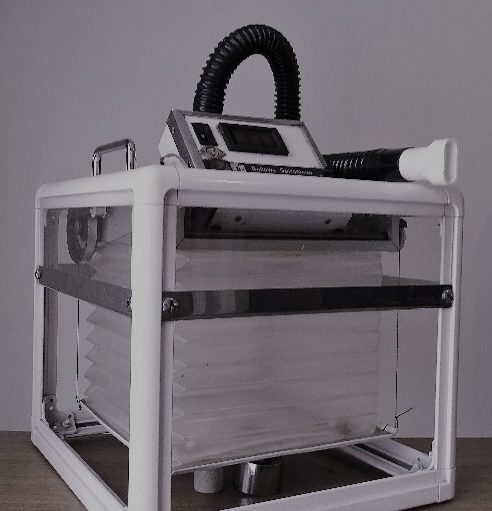
Photo and description are kindly provided by Dr. David Chinn, for an upcoming ARTP article.
“Image showing the bellows expanded vertically.”

Photo and description are kindly provided by Dr. David Chinn, for an upcoming ARTP article.
“Image showing the bellows expanded vertically.”
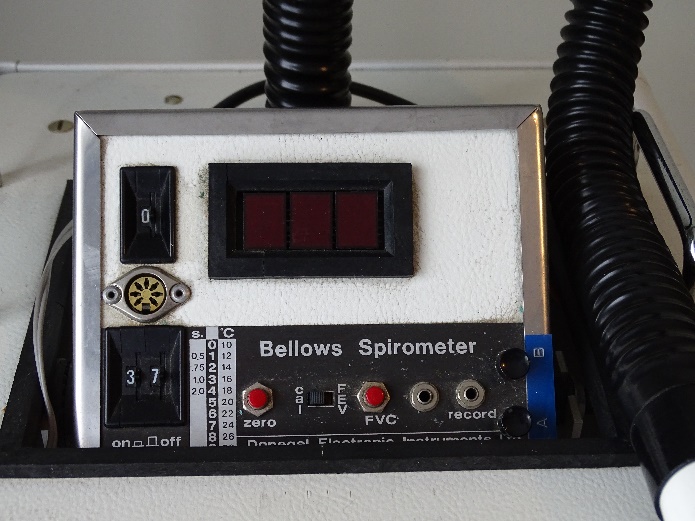
Photo and description are kindly provided by Dr. David Chinn, for an upcoming ARTP article.
“Spirometer display showing tumblers for program setting (upper one), setting the time interval for the FEV (lower left hand) and BTPS temperature correction (lower right hand). The socket below the upper tumbler links to an XY plotter to print the flow-volume curve in delayed time. The jack plug socket marked ‘record’ provides an output to the cassette recorder.”
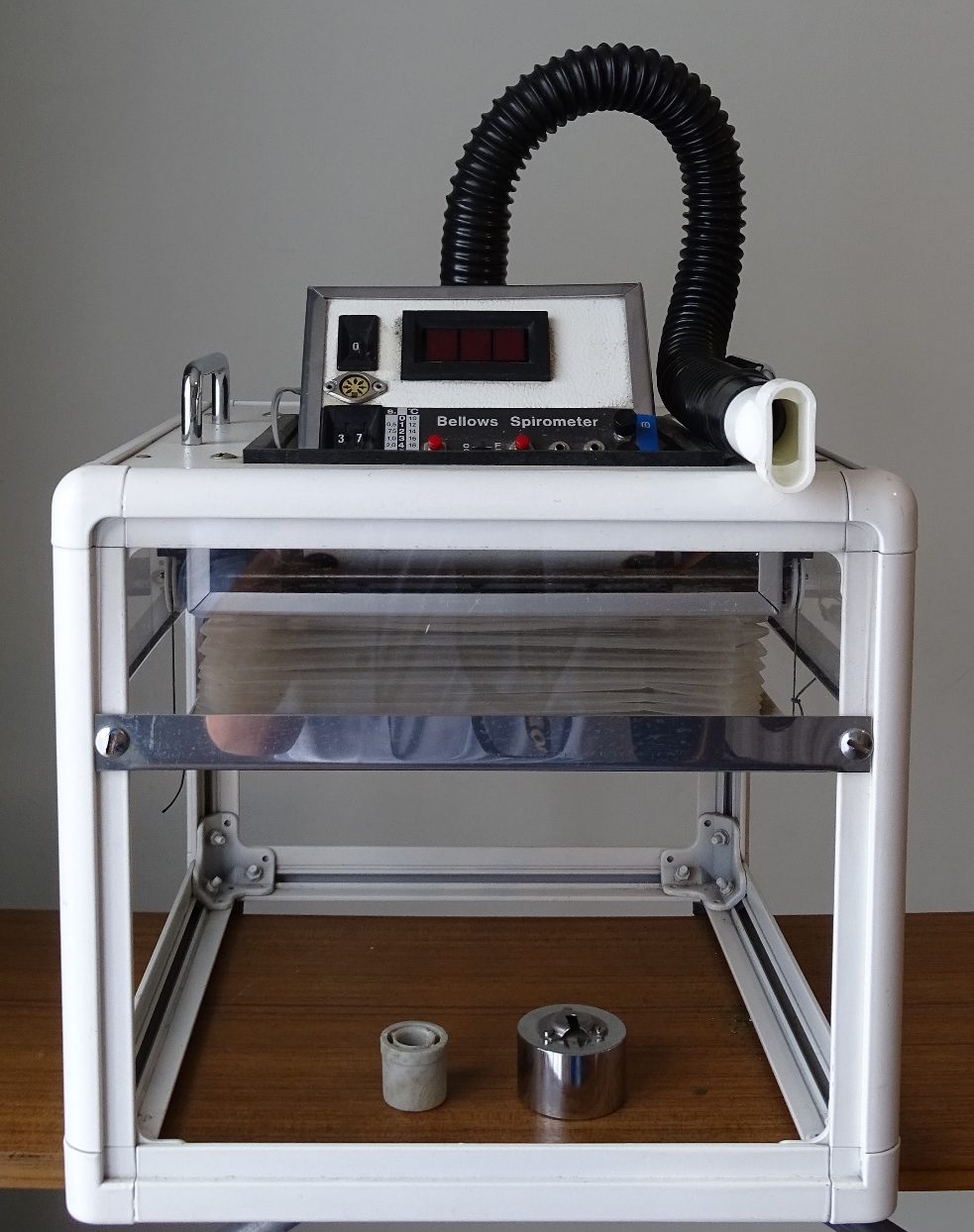
Photo and description are kindly provided by Dr. David Chinn, for an upcoming ARTP article.
“McDermott, dry bellows, digital spirometer with calibrating weight and orifice, 1980 Garw Electronic Instruments, Glamorgan, South Wales
This 6V, battery operated, low resistance dry bellows spirometer was used extensively in epidemiological field studies from the 1970s to the 1990s. The example shown is a rigid frame model but another model with collapsible legs was available to increase its portability. The initial models of the spirometer displayed the FEV1 (or FEV0.75) and FVC. A later, digital version was developed that recorded volume expired in 10ms increments and displayed additionally the PEF, MEF50 and MEF75. The data could be processed to replay the flow-volume curve at a reduced speed on any cheap, slow responding XY printer. In addition, the increments could be stored digitally on a magnetic cassette tape for later processing in the laboratory. The spirometer was excellent for recording Helium-Oxygen flow volume curves and for generating off-line moments analysis applied to the spirogram (Mean Transit Time, Moments Ratio etc).”
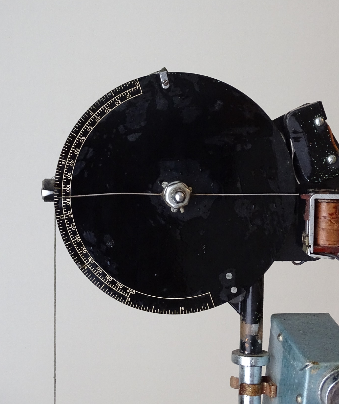
Photo and description are kindly provided by Dr. David Chinn, for an upcoming ARTP article.
“Recording dial, Gaensler Spirometer. The FEV1 (or FEV0.75) was recorded using the stylus. The FVC was recorded using the outer indicator.”
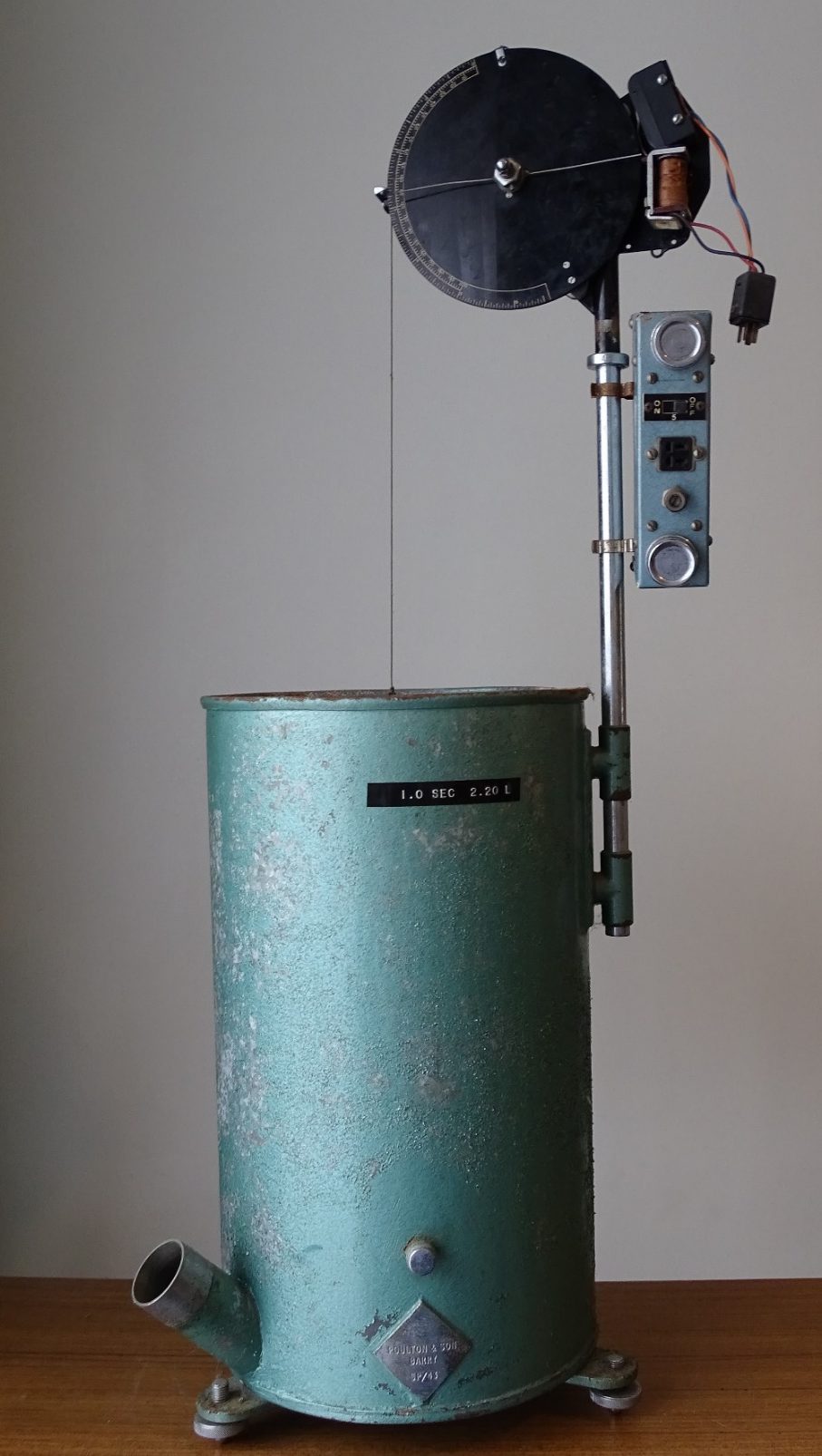
Photo and description provided by Dr. David Chinn, for the ARTP in an upcoming article.
“Gaensler spirometer (Poulton & Son, Barry), 1960s.
This device was obtained from the MRC unit at Llandough Hospital, Wales after its closure in the 1980s. For demonstration purposes the timing device is shown attached to the upright where the counter balance weight would have been in place.”
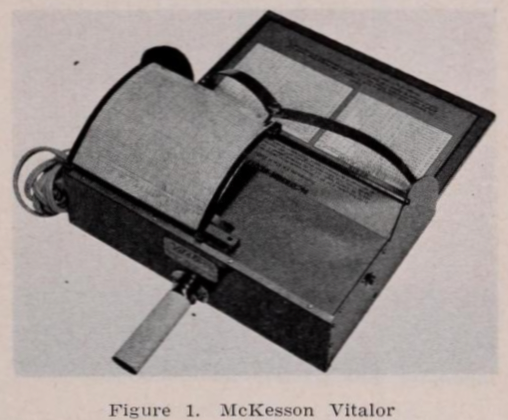
From “Lung function testing in the doctor’s office”, by Burton M. Cohen, Journal of the Medical Society of New Jersey, Volume 60, No. 10, October 1963, page 485.
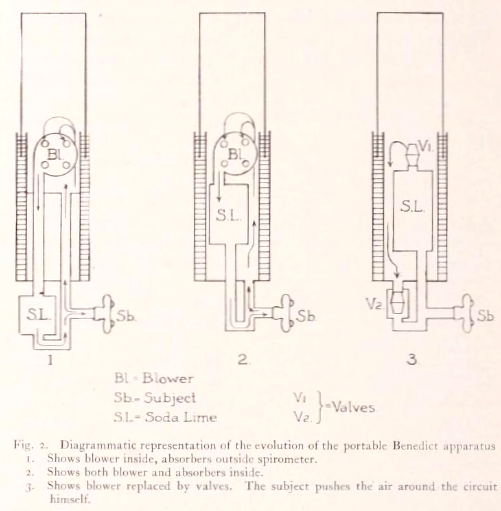
Several different versions of Benedict’s portable basal metabolism system were manufactured. From Albany Medical Annals, Volume 21, October 1922. “An outline of the principals of calorimetry as applied to the clinic”, By J.H. Means, page 442.
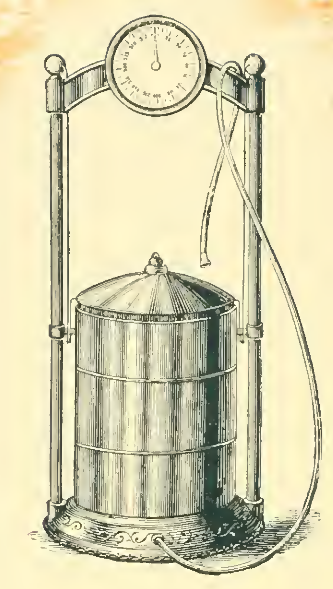
From the Spalding Gymnasium Equipment Catalog, 1891, page 94. A description of its use:
Position – Face spirometer, head up, shoulders well back.
Motion – Take deep breath, place tube in mouth and blow steadily, but neither quick nor slow.
The deep inspiration exercise the inspiratory muscles and especially the diaphragm, while the expiration cause a strong contraction of the muscles of expiration. A truly fine respiratory exercise, and more valuable than is generally supposed.
Made of brass throughout, handsomely nickel-plated. Easily repaired, as the stringing is done on the outside.
Price . . . $30.00
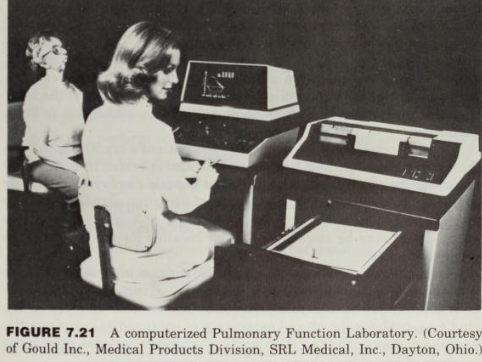
From ‘Computer applications for patient care”, by Joseph D. Bronzino, published by Addison-Wesley, 1982, page 275.
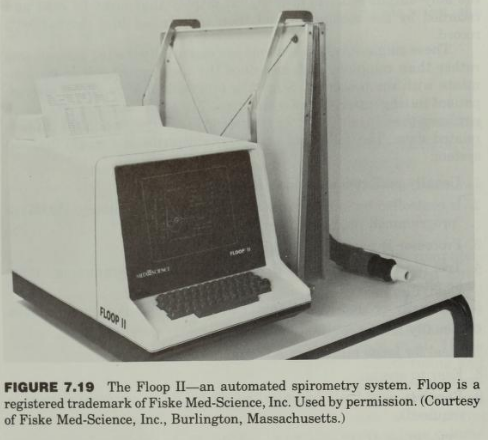
From ‘Computer applications for patient care”, by Joseph D. Bronzino, published by Addison-Wesley, 1982, page 274.